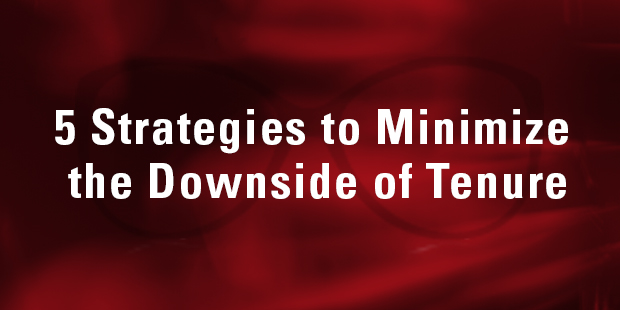
5 Strategies to Minimize the Downside of Staff Tenure
There are a plethora of upsides to staff tenure. You learn the organization over time. You understand the context better and better. You build relationships with the team and the people you are serving. For the most part, tenure makes leaders more effective.
But there is a major downside to tenure; leaders can lose their fresh eyes. When a leader first enters a context, the opportunities and challenges are seen more clearly. Granted, they are often seen through inexperienced and naïve eyes, but they are still seen. Over time, leaders get inoculated to the problems in their own cultures. The same happens in our personal lives. When you first move into a house, you notice the hole in the garage. If you don’t fix it soon, you get used to it. Over time, you don’t even notice it.
So how can a leader minimize the inevitable downside of tenure? Here are five ways to get fresh eyes on the organization/ministry you are leading.
1. Hire from the outside.
John Kotter says if you want to change the culture, hire from outside. If you want to keep the culture, hire from within. Developing your own leaders is ideal as culture is crystalized and people see a path for growth in the organization. However, even in a healthy culture that excels in developing their own leaders, occasionally hiring from the outside helps leaders keep fresh eyes.
2. Look through the eyes of new leaders.
Even if promoting from within, a newly minted leader has fresh and valuable perspective. Press into their perspective.
3. Listen to the questions of new team members.
Culture is often learned by new members when they accidentally break a cultural norm and receive correction or are affirmed for fulfilling one. Thus, they ask questions to learn more about “how things really work around here.” Those questions give leaders, often isolated by layers of organization, an idea of “how things really work around here.”
4. Bring in a strategic outsider.
While a strategic outsider cannot own the execution and the culture, a strategic outsider can provide valuable perspective. My friend and colleague Will Mancini uses the term often to describe the services of Auxano. If you are a ministry leader needing some strategic outside perspective, I highly recommend them.
5. Read outside your discipline.
Reading outside of what you normally read gives you new perspective. And then you can, with great intentionality, look with fresh eyes once again.
These five ways can help, but ultimately leaders must choose to have fresh eyes. Occasionally (and privately), it is good for leaders to resign in their minds. Walk into the office with fresh eyes. Evaluate with a fresh perspective. Look again with the optimism you held when you first accepted the responsibility of leading.
Learn more about overcoming the downside of staff tenure. Connect with an Auxano Navigator and start a conversation with our team.













